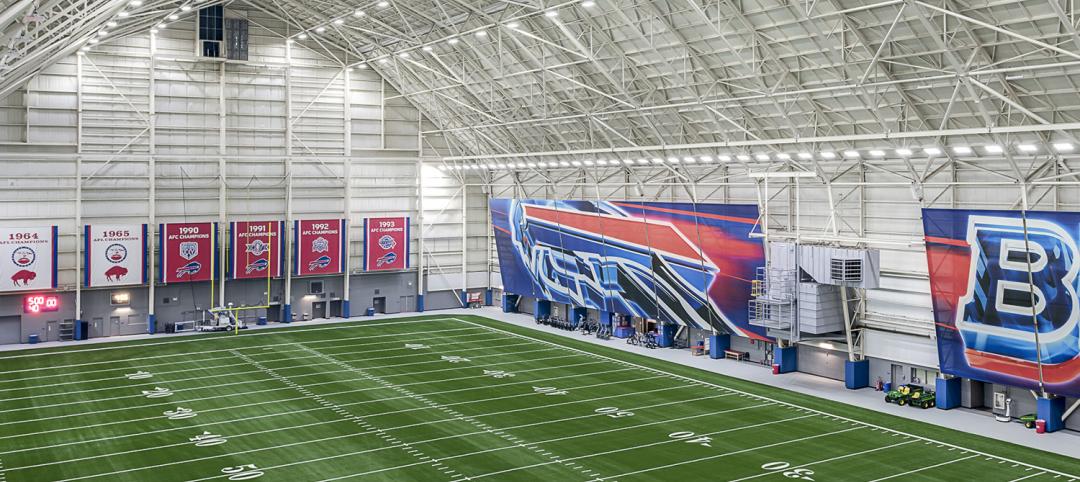An upturn in home-buying and commercial development is a boon for the construction industry, but the pressure to grow can squeeze construction companies grappling with cash flow, expenses and expansion.
— In April, privately-owned housing starts jumped 12.4%, to an annualized rate of 1.319 million units, according to the U.S. Census Bureau and U.S. Dept. of Housing and Urban Development.1
— Cost and availability of labor and developed lots, as well as building material prices, are the top problems builders expect to face this year, according to a recent survey of builders from the NAHB/Wells Fargo Housing Market Index.2
— Construction companies anticipate 5% growth in 2018, up from a strong 4% in 2017, according to a consensus forecast from Oldcastle Business Intelligence.3
You might think it takes a truckload of cash on hand to take advantage of growth in the sector, but here’s how seasoned operators meet the new demand for homes, offices and new locations without drowning in new expenses.

Lining Up New Suppliers in New Areas of Operations
Many construction firms are taking on out-of-state jobs as opportunities arise in regional rebuilding areas like Houston and California. But starting up in new markets is hard.
“When you go to a different area, you need to be able to establish a new set of vendors and that's very time-consuming,” said Ray, a vice president of operations for a large concrete company.
Financial partners can help firms quickly gain the trust of new vendors, no matter the market.
To quickly scale, out-of-towners have to establish credibility. A trusted third-party can help, say construction decision-makers. In particular, financial partners can help firms quickly gain the trust of new vendors, no matter the market.
When Ray needed a new concrete materials supplier in Texas, for example, he took advantage of the existing relationship he had with his business Credit Card financial representative to negotiate with the supplier he wanted to work with, which allowed him to get the materials he needed quickly and at the best price possible.

Managing the Cash Crunch
As builders take on more projects to meet growing demand, it’s taking longer to complete construction jobs. There’s simply not enough construction workers or sub-contractors to get the job done on normal schedules.
“We'd love to build a home in 90 days but in reality, it's taking 130,” said William, a small home builder that does about $40 million a year in revenue. “We accept that and budget for it. As much as we want to build a home in 90 days, it's just not happening.”
Longer timelines mean builders get paid later. Managing cash flow for extended timelines delays your payments to builders. It can turn into a juggling act, particularly when you’re looking to start a new job while previous projects are winding down.
Using a business Credit Card for purchases or materials generates rewards savings that can help defray additional expenses.
To help manage the cash flow crunch, general contractors say they are increasingly working with financial partners that can build custom solutions for their firms. These partners play a helpful role by fully understanding the company’s business needs and helping to ensure their lines of credit are sufficient to allow them to make needed purchases, as well as providing the flexibility they need to jump on demand for new projects.
“Usually it's getting materials for a new job that’s starting up,” said Hal, a vice president of a mid-size building construction contractor. “We may need to purchase specially-ordered materials that are expensive and end up in a catch-22 because we can’t bill for them, but we need them to prepare for the job.”
Having a dedicated financial partner can help contractors and builders avoid the juggling act by developing custom financial programs and solutions. Also, using a business Credit Card for purchases of materials or other items generates rewards savings that can help defray additional expenses due to project delays.

Cards Instead of Cash on the Job Site
Keeping track of expenditures on the jobsite is key to managing cash flow. That challenge becomes even more acute as builders and developers take on projects outside of their normal territories.
Keeping track of expenditures on the jobsite is key to managing cash flow.
Jake, director of operations at a general contractor for commercial construction projects, said his firm has a good idea of what his sub-contractors are going to buy because they get approval from his firm first. But there are always workers on site who need to make purchases.
“Having clear visibility into what are our superintendents’ unexpected expenditures are is really important for our business,” Jake said.
1U.S. Census: Monthly New Residentail Construction, April 2018
2Eye on Housing: Building Materials Prices and Labor Access Top Challenges for 2018
Related Stories
Architects | Sep 1, 2017
5 reasons why AEC firms need to focus on employer branding
Not to be confused with the branding of your firm overall, your employer brand is defined by your reputation as a workplace.
Mixed-Use | Aug 30, 2017
A 50-acre waterfront redevelopment gets under way in Tampa
Nine architects, three interior designers, and nine contractors are involved in this $3 billion project.
Giants 400 | Aug 29, 2017
Top 110 healthcare construction firms
Turner, McCarthy, and Skanska top BD+C’s ranking of the nation’s largest healthcare sector contractor and construction management firms, as reported in the 2017 Giants 300 Report.
Green | Aug 24, 2017
Business case for WELL still developing after first generation office fitouts completed
The costs ranged from 50 cents to $4 per sf, according to a ULI report.
BD+C University Course | Aug 23, 2017
AIA course: New steel systems add strength and beauty
Advances in R&D are fostering new forms of structural and aesthetic steel.
Market Data | Aug 23, 2017
Architecture Billings Index growth moderates
“The July figures show the continuation of healthy trends in the construction sector of our economy,” said AIA Chief Economist, Kermit Baker.
Giants 400 | Aug 16, 2017
Turning R&D into practice
Charlie Pankow’s mandate was simple: Use research to create even better buildings.
Giants 400 | Aug 11, 2017
Top 60 construction management firms
Jacobs, Kraus-Anderson, and Hill International are among the nation’s largest construction management and project management firms, as reported in Building Design+Construction’s 2017 Giants 300 Report.
Giants 400 | Aug 11, 2017
Top 115 contractor firms
Turner, Whiting-Turner, and AECOM top Building Design+Construction’s ranking of the nation’s largest commercial construction firms, as reported in the 2017 Giants 300 Report.
Multifamily Housing | Aug 9, 2017
Related Companies unveils plans for One Hudson Yards luxury rental residences
The 33-story tower will be positioned on the High Line with views of the Hudson River and downtown Manhattan.

















